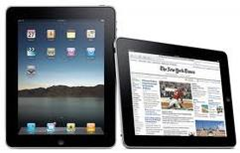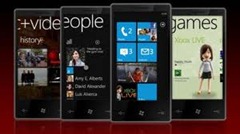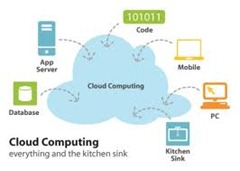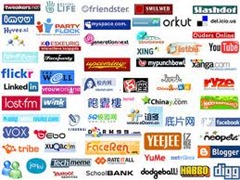
2011/01/28
2011/01/25
2011/01/17
The four generations at (Silent Generation, Baby Boomers, Generation X, Generation Y)
(Published in my professional blog,, www.pgpsi.com)
I recommend you to download and read the document “Gen Y At Work. A profile”, from Kelly Services: The Future of IT Careers: Generation Y
It is a very recommendable reading about the four different generations of workers that are in our companies and in-depth analysis of new workers (Gen Y).
They present not only the main characteristics of Gen Y workers, but also they include the comparison between different gen in several aspects.
And I want to highlight 3 aspects:
- Workplace Flexibility: Gen Y also desire a sense of community at work; teamwork and collaboration come naturally to them. Gen Y value control over their time and a flexible work environment that allows for work-life balance. Workplace flexibility not only means “when” but “where”.
- Technology-enabled: Furthermore, technology has enabled work to be done anywhere and anytime. Email and Personal Digital Assistant (PDA) are two aspects of technology that have created such convenience. When at it, they value getting the job done well and efficiently.
- Relationship-based: Other than work, they also like to make friends. Embracing the power of computers and wireless technology, neither the traditional 9 am to 5 pm working hours nor being bound to an office location carry meaning for Gen Y; they simply don’t believe that all work needs to be performed in the office. More than any other generation, Gen Y place a high ranking on interpersonal relationships at work and the vast majority want co-workers “who make work fun”.
2011/01/13
Imperdonable no ver éste vídeo (Conferencia Emilio Duró)
Hace casi diez años, tuve ocasión de conocer a Emilio Duró, en un taller de dos días sobre ‘Motivación, liderazgo emocional,…’ que llevamos a cabo para un grupo de personas en nuestra empresa, en Navacerrada.
Lo cierto es que nunca supe cuál era el título, pero me impactó.
¡os lo aseguro!
Es por eso que he tenido ocasión de rememorar ese taller con el vídeo de la conferencia que Emilio impartió hace unos días en Galícia.
Y me ha supuesto una nueva inyección de optimismo.
Es por eso que os lo recomiendo. De verdad.
Serán unos minutos muy, muy, bien aprovechados
2011/01/05
Are our companies prepared for the new world of work?
(Publicat al meu blog professional, www.pgpsi.com)
I want to recommend you the research note of Tom Austin, from Gartner (www.gartner.com), published on 30 march 2010, “Watchlist: Continuing Changes in the Nature of Work: 2010- 2020”, that is available at http://www.sourcingprofessional.nl/share/files/45_209935/watchlist_continuing_changes_1746021.pdf
I will not reproduce the content of this interesting article, of course, but I want to highlight 5 of 10 changes in the nature of work that Gartner predicts will occur in our enterprises:
- De-routinization of work
- Working with the collective
- Work Sketch-Ups
- Hyperconnected
- My Place
And the last message of the document: “The challenge for IT professionals concerned with supporting (or enhancing the performance of) high-value work is going to be in moving from the metaphors of the 1980s (Office Automation), 1990s (Groupware), 2000s (Enterprise 2.0) into a brave new world characterized by increased volatility, hyperconnectedness, swarming and more.”

Now, the question we have to answer is “has yet our company evolved from the office automation to groupware and enterprise 2.0 in order to be prepared for this new challenge?”
2011/01/03
Characterization of Digital Economy (Information Society)
How do we can define the digital economy (or information society)?
Looking for material for my PhD thesis, I found a very interesting reference from Tapscott D. (“Growing Up Digital. The Rise of the Net Generation” – McGraw-Hill, 1998) who singles out the twelve themes of the digital economy:
- Orientation to knowledge, so that the new society is actually a society of knowledge
- Digitization, the new society is a digital society
- Virtualization, physical things can become virtual things, from virtual ballot boxes to virtual jobs, the “Message Maestro” business center, corporations, mininet companies, government bodies, offices, shops, populations, or beer
- Molecularization, the concept of “mass” is replaced by the concept of “molecularized”
- Internet work, the new society is operating through cluster networks
- Disintermediation, between consumers and producers
- Convergence, computing, communications, and content industries are converging to become the leading economic sector
- Innovative nature, thriving creativity
- “Presumption”, via customization combining production and consumption
- Immediacy, this becomes a key factor, timeliness is everything for businesses and success
- Globalization, the economy of the new society has a global scale
- Dissonance, discordance issues are rising due to unprecedented social conflicts
Of course you can find several more definitions of Information Society (I invite you to review “The nature of the modern Information Society”, a work of A.D. Elyakov) but I considered that proposed by Tapscott was interesting.
I hope you will agree.
2011/01/01
Revisant les TI del 2010: iPad, Windows Phone7, Kinect,…
Ara fa uns dies, en aquest mateix blog (i en el meu blog professional, www.pgpsi.com) publicava un post sobre les tecndències per al 2011, a nivell de Tecnologies de la Informació per a les empreses (2011 IT Trends for Business and Companies).
En aquell cas, era un recull del que proposen diferents mitjans i ‘experts’.
Avui, primer dia del nou any, 2011, volia fer un repàs als que, al meu entendre, han estat 5 fets destacables del 2010, també a nivell de tecnologies de la informació.
No és un repàs exhaustiu ni pretèn ser ‘objectiu’.
És el meu humil parer, òbviament
- En primer lloc, no podem obviar el nou gadget d’Apple: l’iPad. O com dic jo, la redescoberta dels “tablets” (fa anys que existeixen els windows tablets).
Amb la sortida al mercat de l’iPad d’Apple (que un cop mes ha triomfat) hem descobert/redescobert que hi ha maneres d’interacccionar amb els ordinadors, cada vegada mes naturals.
Mes enllà del teclat i del ratolí, l’ús, amb les nostres pròpies mans (i dits), amb una interfície àgil, clara, senzilla i pràctica, ens facilita l’accés a tot un món, Internet, sobretot, des d’on siguem.

- Ara fa unes poques setmanes, Microsoft llençava al mercat la seva nova versió de sistema operatiu per mòbils, el Windows Phone7.
He tingut ocasió de treballar-hi, dia a dia, des de llavors, i d’utlitzar-ho, tant a nivell professional com personal i cal reconèixer que ha estat un pas endavant important i significatiu.
I lligant-ho amb el punt anterior, un pas mes, en usabilitat, facilitat d’accés a la informació del teu entorn (xarxes socials, agenda professional, personal, …).
Tant un cas (iPad) com l’altre (Windows Phone 7) no deixen de ser la consolidació d’un fenòmen que ja fa uns anys que estem interioritzant: la importància de la mobilitat.
- I el que està cridat a ser un dels regals estrelles d’aquest nadal, la Kinect, el dispositiu de la Xbox que permet que puguis interactuar amb la teva videoconsola sense necessitat de cap comandament. El teu cos és el comandament.
És l’extrem del que anomenen “Natural User Interface”, és a dir, la manera mes natura d’interactuar amb un ordinador-aparell.
Tots recordarem la pel.lícula “Minority Report”, amb el Tom Cruise, oi? Doncs bé, la manera d’interactuar amb el sistema ja és possible, però inclús sense guants.
- Cloud Computing. O la informàtica als núvols.
No és un concepte nou. Fa anys que existeix, però sí que podríem dir que en el 2010 s’ha popularitzat, que no vol dir estès.
De fet, tots estem treballant continuament amb aplicacions en mode ‘serve’ o ‘cloud computing’.
On tenim l’aplicació del GMail o del Hotmail? On estan instal·lades les xarxes socials (Facebook, Twitter,…)?
Entorns com Live o Google Docs / Google Sites / Google Apps,…, ens permeten de treballar amb aplicacions ofimàtiques que no són als nostres ordinadors.
Podem emmagatzemar documents, arxius, informació vària, en discs durs virtual (DropBox, Zumodrive,…) que estan disponible on no sabem on.
- I finalment, el creixement continuat de les xarxes socials. Facebook segueix augmentant els seus usuaris (500 milions en aquest 2010), a ritmes accelerats.
Twitter s’ha popularitzat.
LinkedIn, xarxa social professional, s’amplia dia a dia.
I apareixen noves aplicacions que exploten la ‘geolocalització’ com FourSquare, per exemple.
Les empreses es van adonant de la importància d’aquestes xarxes socials i està apareixent, el que jo anomeno, la ‘Factura Digital 2.0”: els que hi són i els que no hi són.
Segur que podríem trobar molt altres elements destacats.
Permeteu-me, però, que, simplement, contribueixi amb aquest 5 a la llista.
Voleu afegir-ne algun mes?
Què creieu que hauria de sortir en aquesta llista?
